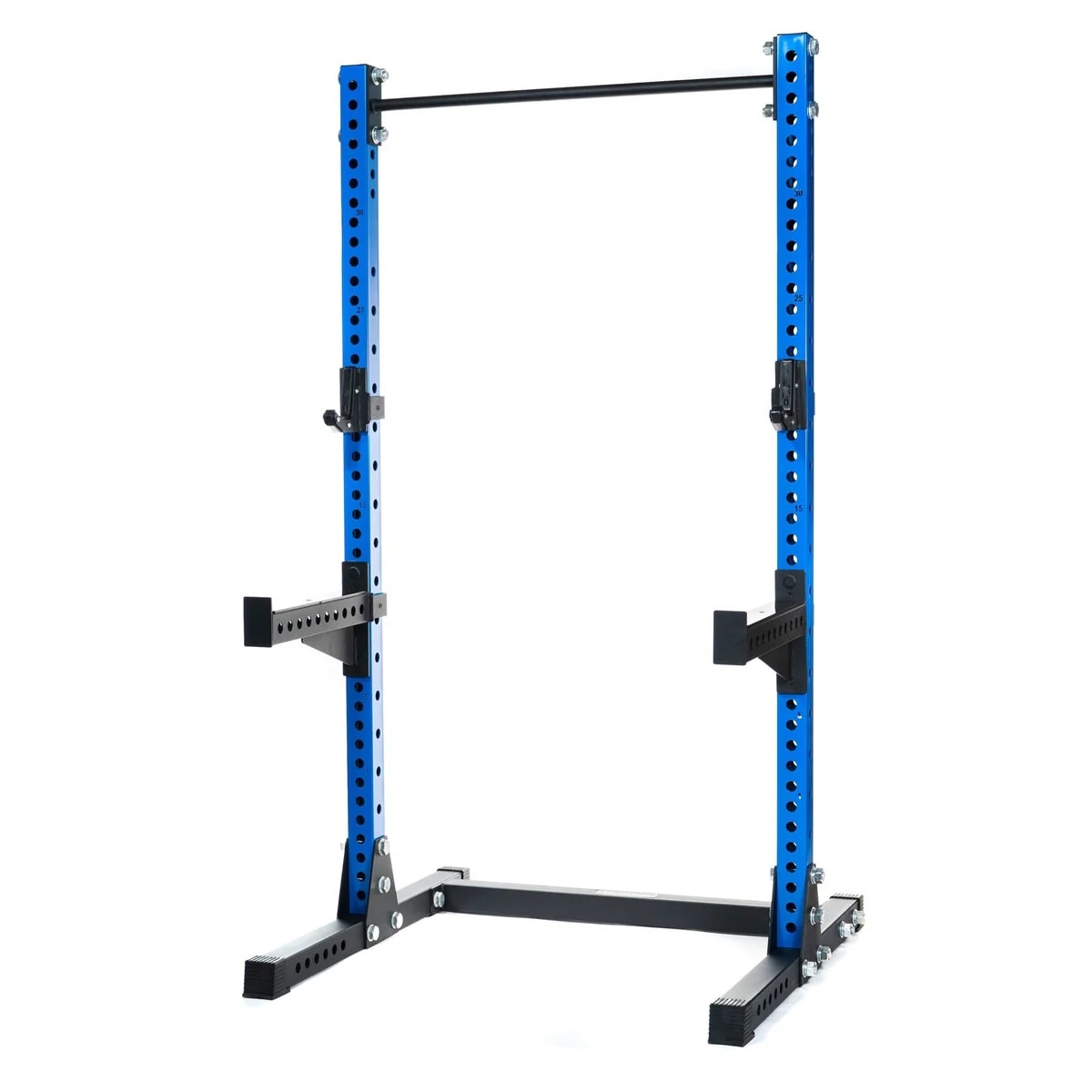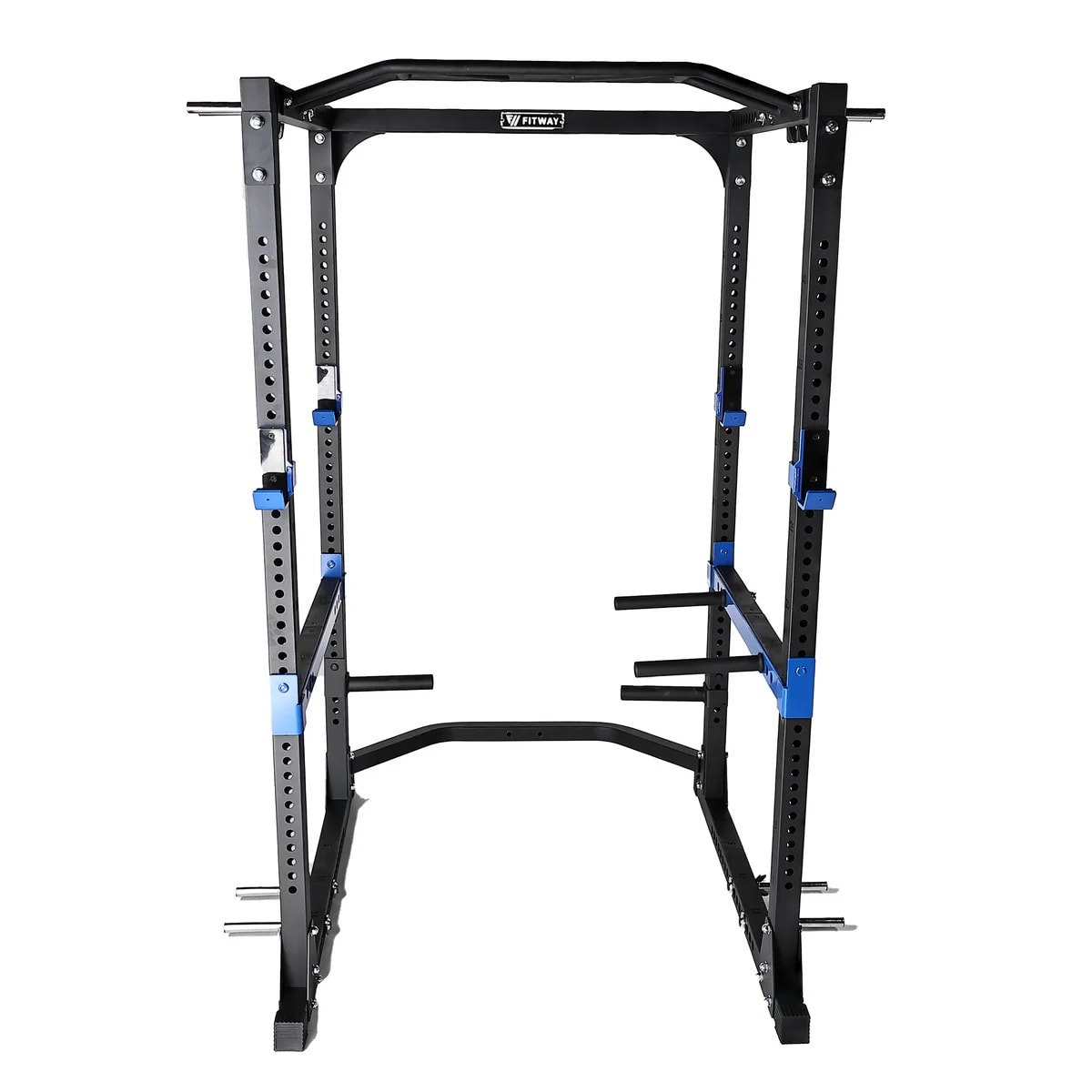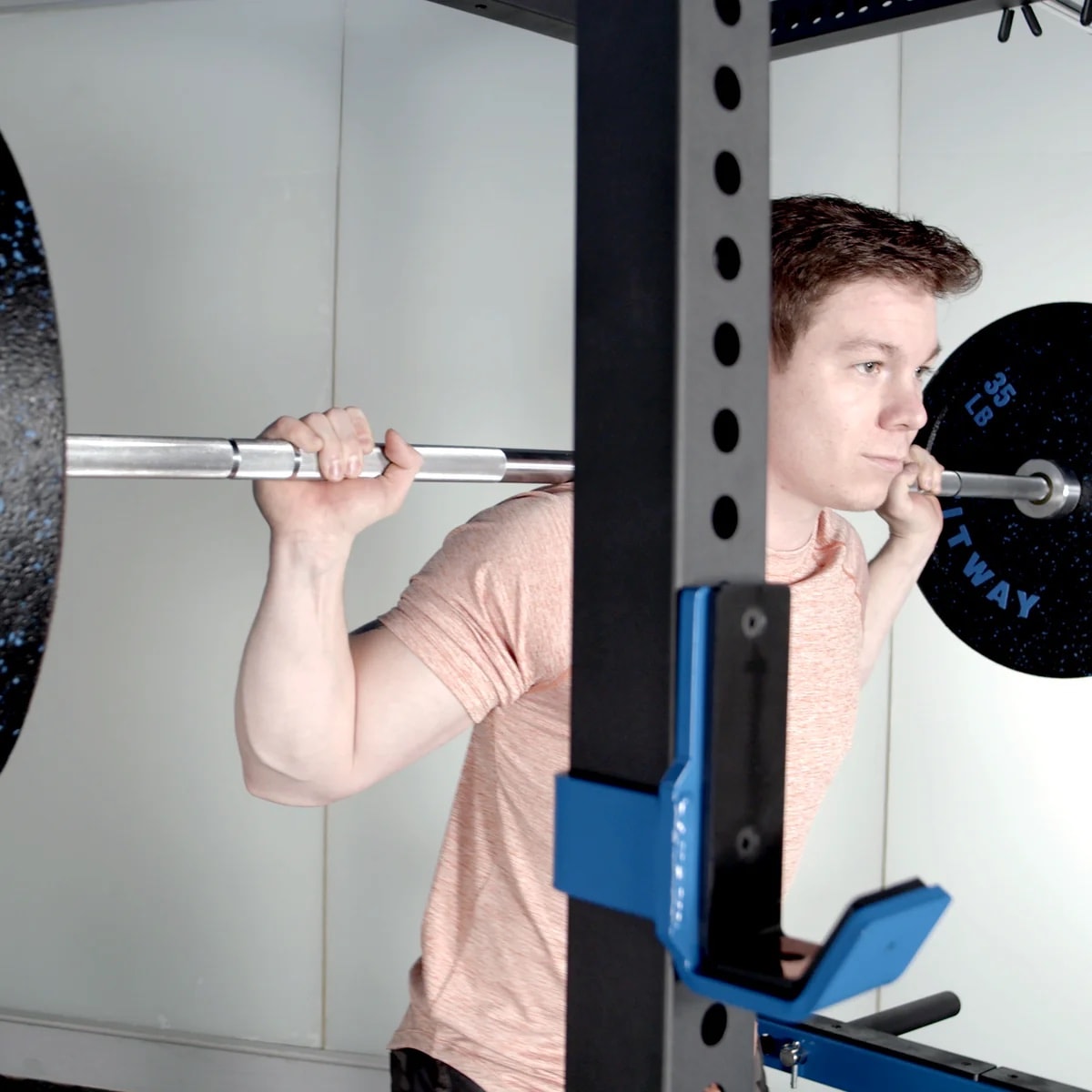Squat Stands, Half Racks and Power Cages Toronto
If you're interested in setting up or enhancing your home gym, investing in a lifting rack is a staple item. Choosing the right lifting rack can be a challenge, especially when there are so many different options. Some people prefer squat stands for its compact size and easy transport, while others refuse to work out on anything less than a full rack. So, what are the differences between the three main categories of lifting racks?
Why Buy a Squat Rack or Power Rack For Your Home Gym
Squat racks will allow you to do a variety of exercises in your home gym. The key thing about a squat rack is it allows you to do squats and dead lifts safely. This is a very versatile piece of fitness equipment and particularly helpful for those wanting to lift heavy weights. This is also a great starting point for someone that has cardio in their fitness routine, but wants to add in lifting weights. Many people prefer doing exercises like squat, deadlifts and bench press with a barbell and this piece of equipment allows you to do so.
SQUAT STANDS
The squat stand or squat rack offers the smallest amount of support of the three options we'll be covering today. These stands are typically the most portable. Some squat stands will be in two separate pieces with transport wheels, but even without transport wheels they are typically light enough to move around easily. To put it simply, squat stands are a light-weight method of keeping the bar off the ground. As a result of the light weight and small footprint, squat stands will typically have the lowest weight capacity. Another major factor for squat stands is they usually will not have safety bars. Safety bars are an extremely important feature for those wishing to lift heavy.
The arms can often be moved up and down to adjust the bar height or J-hook positioning can be adjusted. Squat stands generally come in at the lowest price point and can be a good option if you’re wanting a simple solution with a small footprint. Within the different squat stands there will be a range of quality and weight capacity.

HALF RACKS
Half racks offer more support and adjustability than squat stands. They also feature safety bars and sometimes an overhead bar for pull-ups and band attachments. A half rack will only have one set of uprights and won't form the enclosed cage like you would see on a full power rack.
This type of rack provides you with great all around freedom in your lifting. It is the perfect solution if you're looking for small footprint equipment, but desire the extra support and options that a squat stand won’t offer. Many half racks will have increments on the front columns which allow you to position the J-hooks and safety bars in the exact position you need them. Proper positioning ensures that the safety bars will catch the bar at the right height and prevent you from injuring yourself.
Due to the dual vertical supports and horizontal connections, a standard half rack should safely support the user and have a higher weight capacity. That being said, the enclosed cage design of a full rack will always be the most stable option. If you plan on dumping weights on the safeties, it's very important to check the weight capacity and you may even consider bolting the rack down to reduce movement.
Some half racks will come with plate storage, bar storage and the option for attachments, whereas others will be more simple.

POWER RACK
A power rack, power cage, or full rack serves much the same purpose as a half rack, but will provide the most stability. The cage design has dual columns at the front and back, supported by horizontal bars top and bottom. This allows this style of rack to be able to handle weights heavier than a half rack. A full power rack will take up more space than most squat stands and half racks mainly in depth.
The dual-upright layout also means that Power Racks can often be used by two people at once. One on the inside and one on the outside of the rack. Usually, a rack wouldn't come with enough J-Hooks and spotter arms to do so but extras typically can be purchased. Power racks will vary in design a little bit, with some racks very simple and some racks that include more attachments, such as a dip station, built in plate storage or multi-grip pull up bar.
Overall, this option will provide you with the most support and the most options for your workout.

Weight Capacity
The different categories of cages and squat rack will have different weight capacities. This is a very important factor to consider, especially if you want to be lifting heavy. For higher capacity look in the full cages category. The complete four column design will be able to handle more in your gym.
Space:
When deciding on any piece of fitness equipment, space is an important factor. Make sure to measure out the space you have and look at the dimensions of the unit you’re interested in. Ceiling height will be particularly important with racks, especially if you want to use the pull up bar you will need extra space at the top. You should also factor in enough space on either side of the rack to load the bar with plates and easily move around the unit.
Attachments & Accessories:
Some racks will have the option to add additional attachments, such as storage solutions, landmines and much more. Some racks even have the option to add a lat attachment, so if there’s something specific you want make sure that the rack you’re looking at has that option. Although many racks look the same, or have similar measurements, it is not common that attachments and accessories from other brands will be compatible. Many people will also want a pull up bar. Pull up bars are a common attachment on a half or full rack, but you'll want to double check if a pull up bar is important to you. Rack accessories can add a lot to your workout, so these are important factors to consider.
Weight Storage
Weight storage is another important factor to consider. Having the option to store your plates directly on the rack will save a lot of space and keep your home gym organized.
Quality:
Keep in mind that although many squat racks may look the same aesthetically that like anything, there are different levels of quality and durability. Typically a thicker, heavier squat rack will feel more stable and endure a higher weight capacity. Some squat racks may be commercial grade, which means their durability in a home gym setting will be great. If you're lifting a really high amount of weights, you may want to consider a more heavy duty, high quality squat rack.
Popular Brands Available in Canada
Popular brands for choosing a great product include Body Solid, Hoist, FitWay, Torque, Inspire and Matrix. These are just a few of the brands in Canada we trust. The benefit of choosing a squat rack from these brands is that we should be able to source parts if maintenance is needed down the road. Fitness Experience wants to help you the best quality product, in stock and ready for delivery. Purchasing a sturdy rack with a great bench will open up a whole new window for the future of your home workout.

